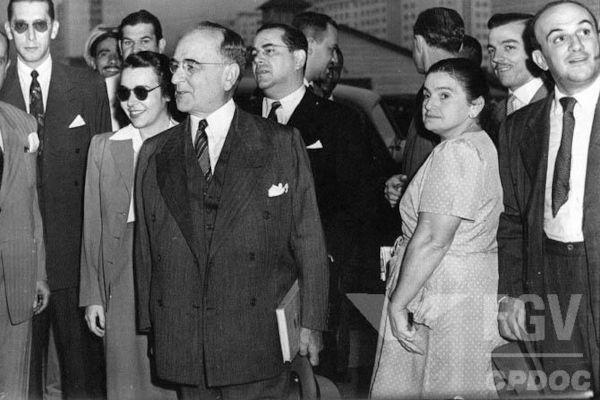O Iguazu Territory was created by Decree-Law No. 5.812, of September 13, 1943, together with four other new national territories, Ponta Porã, in the current state of Mato Grosso do Sul, Amapá, Rio Branco, currently Roraima, and Guaporé, which gave rise to the state of Rondônia. These territories were directly administered by the government of Getúlio Vargas, during his Estado Novo dictatorship.
The Iguaçu Territory was located in the west and southwest of Paraná and west of Santa Catarina, with an area of 68,800 km² and a population of about 96,000 inhabitants. The capital of the national territory was the city of Iguaçu, today called Laranjeiras. Most of the administration of the Iguaçu Territory was under the responsibility of Major Frederico Trotta, appointed by the federal government. These territories were directly administered by the federal government, marking the centralizing character of the authoritarian Estado Novo.
The objective of creating these national territories was part of the attempt to colonize the interior of the Brazil, in the process known as “March to the West”, an effort to reduce the population gaps in the territory Brazilian. Another objective was to avoid dismemberment and loss of part of the national territory in the event of the transposition of the conflicts of the Second World War to South America. The creation of national territories was a way to guarantee National Security.
Do not stop now... There's more after the advertising ;)
Another important point in the creation of the Territory of Iguaçu was related to the interests of maintaining territorial integrity in places that could be targets of dispute with neighboring countries. In the case of the Territory of Iguaçu, there was Argentine interest in the region, since the final decades of the Nineteenth century there were diplomatic conflicts over the country to which land in this corner of southern Brazil should to belong.
During the term of the federal administration, several educational institutions, roads, houses and libraries were built. A district was installed in Iguaçu and police, teachers and health professionals from Paraná and Rio de Janeiro were also transferred to the Territory of Iguaçu.
With the end of World War II and also of the Estado Novo, in 1945, political forces from Paraná and Santa Catarina began to press for the extinction of the Territory of Iguaçu, returning the lands to be administered again by the two States. This was achieved with the Constitution of 1946, which extinguished both the Territory of Iguaçu and Ponta Porã, keeping only the others.
After this period, a campaign for the creation of a new state in the region, called the Pro-Creation Movement of the “Estado do Iguaçu”, was started, but it was not successful.
By Tales Pinto
Master in History
Would you like to reference this text in a school or academic work? Look:
PINTO, Tales dos Santos. "Iguaçu Territory in southern Brazil"; Brazil School. Available in: https://brasilescola.uol.com.br/historiab/o-territorio-iguacu.htm. Accessed on June 27, 2021.

